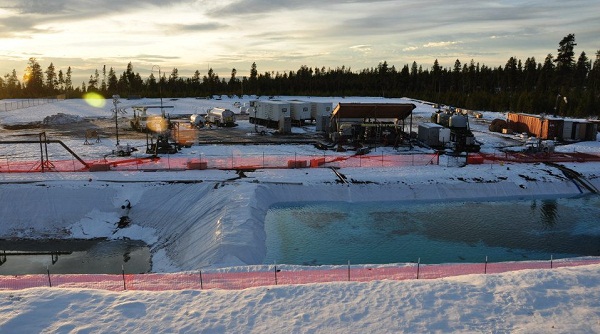U.S. authorities have approved another plan to develop and test a geothermal reservoir using enhanced geothermal system (EGS) technology.
This is the same technology we’ve been hearing about with the Newberry Volcano project in Central Oregon, although in the new Nevada situation the goal is to expand the use of an already built geothermal power plant, not start from scratch.

There’s a lot of excitement that this technology can vastly increase the amount of energy gained from the heat that resides under Earth’s surface.
How will it do that? Well, traditional geothermal relies on finding a combination of hot rock, water and permeability. Drill a hole, pull up the hot water and steam and use it to turn a turbine to produce electricity. Simple.
Unfortunately for power-hungry humans, nature doesn’t always conveniently bring that happy trio together.
EGS involves creating tons of tiny crevices in hot, dry rock formations. This is done by forcing pressurized fluid down into the rock and causing little earthquakes. The crevices that develop can then be filled with fluid, which can then be heated and run up from the ground, where the heat is extracted to make steam. (The fluid can then sent back down in more or less a closed loop.)
But wait, you’re thinking: Isn’t this that evil fracking thing we’ve been hearing about?
AltaRock Energy, the company doing the project on the Newberry Volcano, 22 miles south of Bend, Ore., says what they do in EGS is way different than what companies do to get oil and natural gas out of shale formations. From the FAQ on their website:
The Newberry EGS Demonstration Project is based on the concept of hydroshearing not hydrofracturing. Hydroshearing occurs when friction is reduced on natural rock fractures by increased water pressure, which allows the fracture walls to slip past each other slightly. Hydroshearing occurs at pressures much lower than those needed to break, or frack, the rock. At Newberry, we expect surface pressures less than 1,600 psi to initiate hydroshearing. Further, hydroshearing does not require gels or proppants, because the small, hydrosheared fractures will remain slightly open, less than a tenth of an inch, due to the irregularities on the fracture walls. We will add small amounts of non-toxic tracers and non-toxic diverter materials to the injected water (See FAQ #2), all of which have been reviewed and approved by regulatory agencies.
The U.S. Department of Energy-backed Nevada project is being pursued by Ormat. According to a preliminary environmental assessment [PDF], in April 2007 the company installed Well 15-12 at a geothermal site about 50 miles northeast of Reno, only to find that “the well does not have sufficient hydraulic connections with the geothermal reservoir and it has since remained inactive.” Ormat says “opening up the existing network of minute cracks in the rocks deep underground, where natural fractures already occur,” would “enable increased production of hot geothermal water, thus increasing the power output of the Brady Hot Springs Power Plant up to the plant’s designed capacity.”